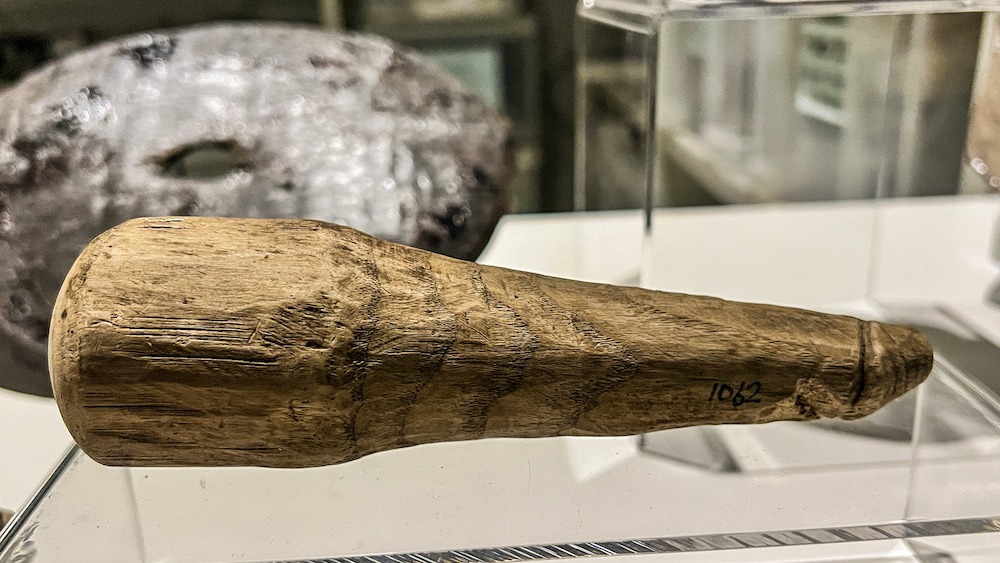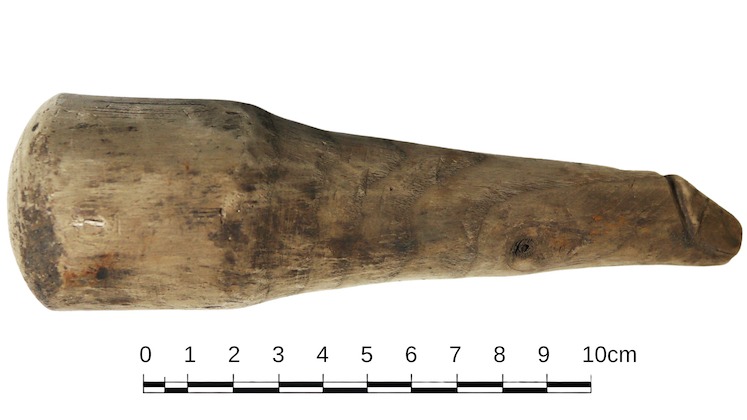Smooth wooden phallus found at a Roman fort was likely a sex toy
An ancient Roman wooden phallus found buried in a ditch was likely used for sexual purposes and is now on display at a museum in England.

A wooden phallus found in a ditch at Vindolanda, a Roman auxiliary fort in central England, may have been used for sexual purposes, new research suggests.
Archaeologists unearthed the roughly 7-inch-long (17 centimeters) phallus in 1992 and suspected that it could have been used a number of ways, including as a pestle or a good-luck charm to "ward off evil." However, a more recent analysis using 3D scans of the object revealed that both ends were worn smooth compared to the rest of the piece, indicating that it had been touched repeatedly over time, according to the study, published Feb. 20 in the journal Antiquity.
The object is likely the "first known example of a non-miniaturized disembodied phallus made of wood in the Roman world" and was one of numerous items discarded in a second century A.D. ditch, including shoes and dress accessories, small tools, and craft waste items, like scraps of leather and worked antlers, according to a statement.
Related: Ancient Roman penis sculpture could be the largest of its kind ever discovered
Over the years, archaeologists have suggested a number of possible purposes for the object. For example, they said it might have been used as a darning tool or as a pestle for grinding ingredients while cooking or making medical treatments, or it might have been attached to a statue that "passers-by would touch for good luck or to absorb protection from misfortune," according to the statement.
"The size of the phallus and the fact that it was carved from wood raises a number of questions about its use in antiquity," first author Robert Collins, a senior lecturer in the department of archaeology at Newcastle University in England, said in a statement. "We cannot be certain of its intended use, in contrast to most other phallic objects that make symbolic use of that shape for a clear function, like a good luck charm."
"We know that the ancient Romans and Greeks used sexual implements — this object from Vindolanda could be an example of one," Collins said.
Get the world’s most fascinating discoveries delivered straight to your inbox.
Phalli were commonplace in the Roman Empire and were depicted in painted frescoes and mosaics, or even as embellishments on pottery or as carved knife handles. Smaller pieces carved out of bone or stone could also be worn around the neck as jewelry. Ancient Romans believed that these symbols could "protect against bad luck," according to the statement.
The wood phallus is currently on display at the Vindolanda museum.
Jennifer Nalewicki is former Live Science staff writer and Salt Lake City-based journalist whose work has been featured in The New York Times, Smithsonian Magazine, Scientific American, Popular Mechanics and more. She covers several science topics from planet Earth to paleontology and archaeology to health and culture. Prior to freelancing, Jennifer held an Editor role at Time Inc. Jennifer has a bachelor's degree in Journalism from The University of Texas at Austin.



